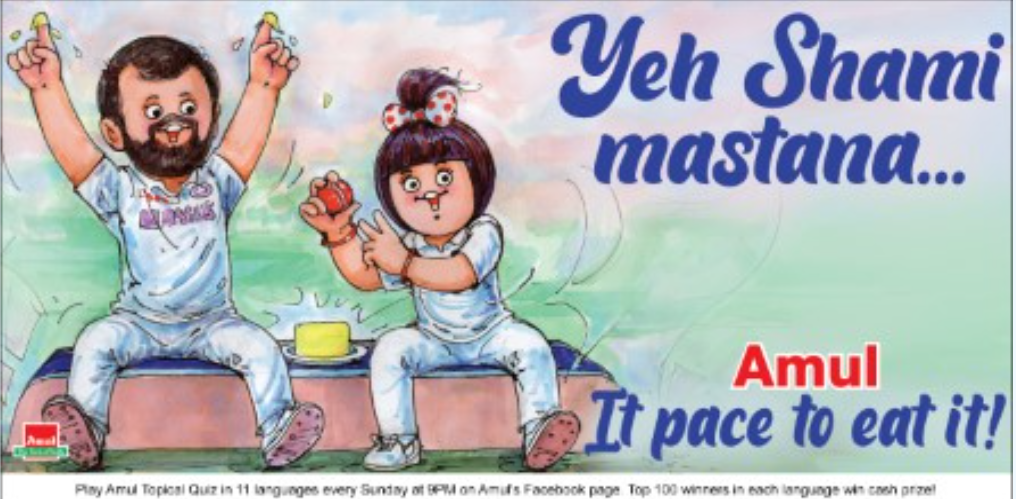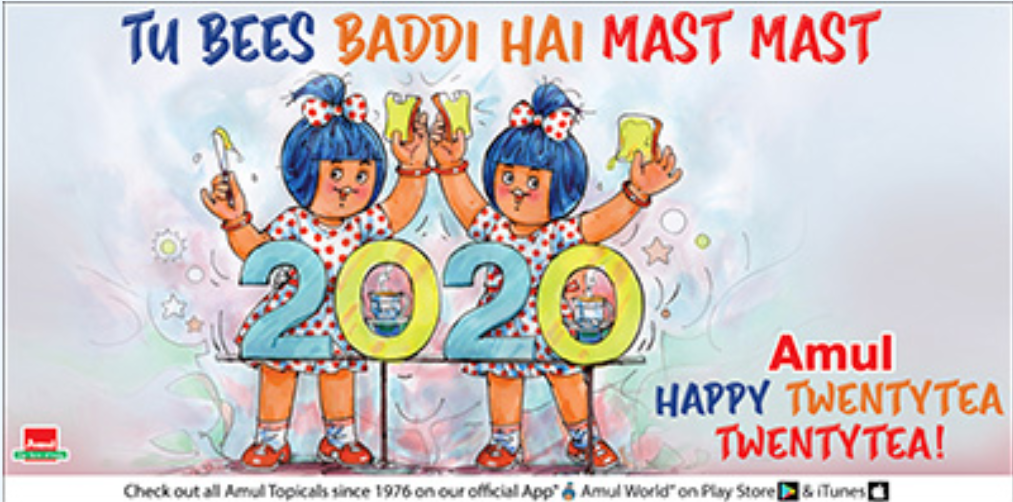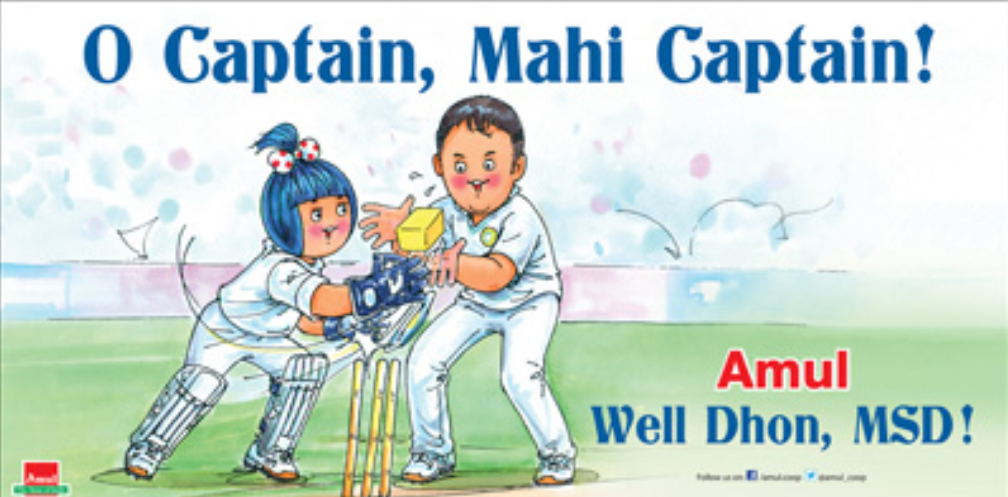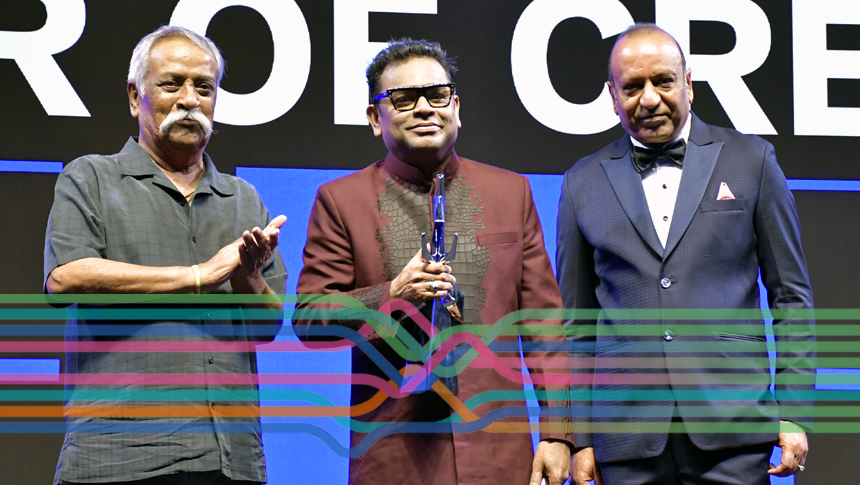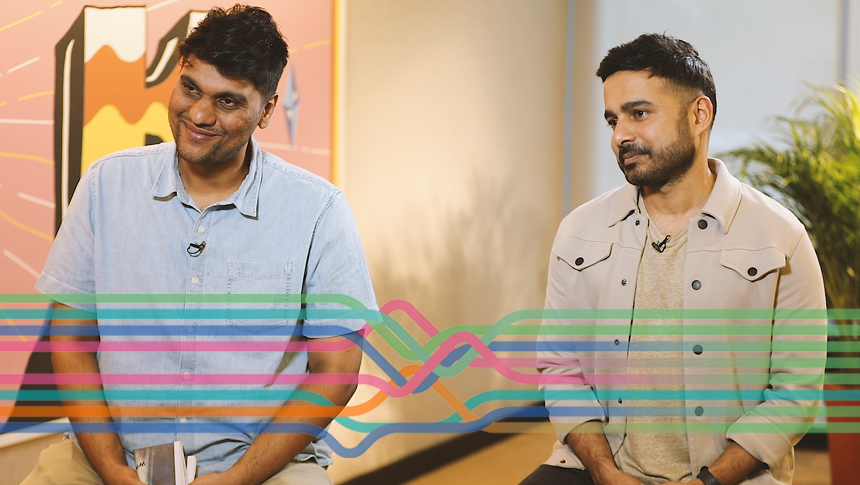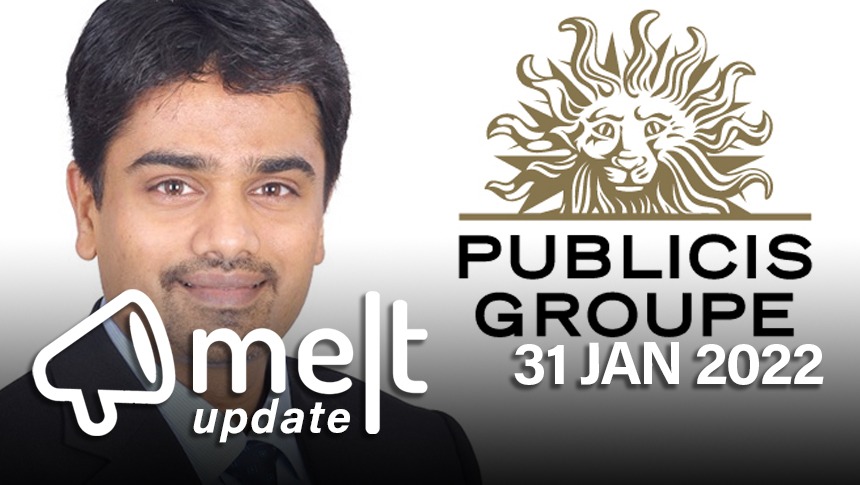Out-of-Home (OOH) advertising has been a dynamic field, continually evolving to capture the attention of audiences in innovative ways. From the towering billboards that once dominated highways to the interactive digital screens of today, OOH advertising in India has undergone a remarkable transformation. This journey reflects not only technological advancements but also changing consumer behaviours and expectations.
The era of traditional billboards
In the early days, static billboards were the cornerstone of OOH advertising. Simple yet impactful, these billboards were strategically placed in high-traffic areas to build brand recognition through repeated exposure. Bold visuals and concise messages were designed to capture attention quickly.
The Amul Butter billboards, which began in the 1960s, exemplify the power of static advertising. Known for their witty, topical content, these billboards became cultural icons, engaging audiences with clever commentary on current events. They not only promoted the product but also established a memorable brand identity.
Also Read: The Future Of Experiential Marketing In India
Transition to digital screens
The shift from static to digital billboards has revolutionised out-of-home (OOH) advertising, introducing flexibility and interactivity. Digital screens allow real-time updates and dynamic content, with multiple ads displayed on a single screen.

In India, digital billboards now account for about 30% of OOH advertising spend, reflecting their growing importance. The number of digital billboards is projected to surpass 500 by 2024, highlighting the rapid adoption of this technology. A prime example of this shift is Xtreme Media’s installation of India’s largest digital billboard on the Eastern Express Highway in Ghatkopar, Mumbai. This development showcases the dynamic and engaging potential of digital advertising.
Also Read: How Agencies Fuel Creativity Beyond Campaigns
Interactive and programmatic advertising
The integration of interactive and programmatic elements marked the next phase of OOH advertising. This innovation brought billboards to life, allowing for more engaging and immersive experiences.
One standout example is Swiggy Instamart’s Valentine’s Day campaign, which featured interactive installations designed to address “love emergencies.” Strategically placed in high-traffic areas of Mumbai and Gurugram, these installations offered an interactive solution for love emergencies. Instead of breaking the glass, passers-by were encouraged to scan a QR code, which directed them to Instamart. There, they could explore a variety of Valentine’s Day gift options with delivery in just 10 minutes.
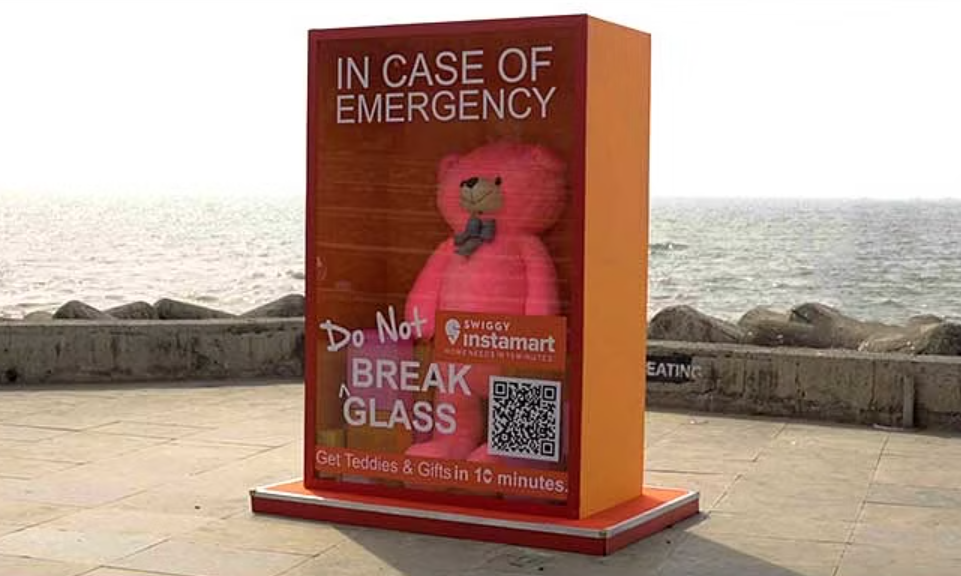
Photo Credits: https://www.exchange4media.com/ 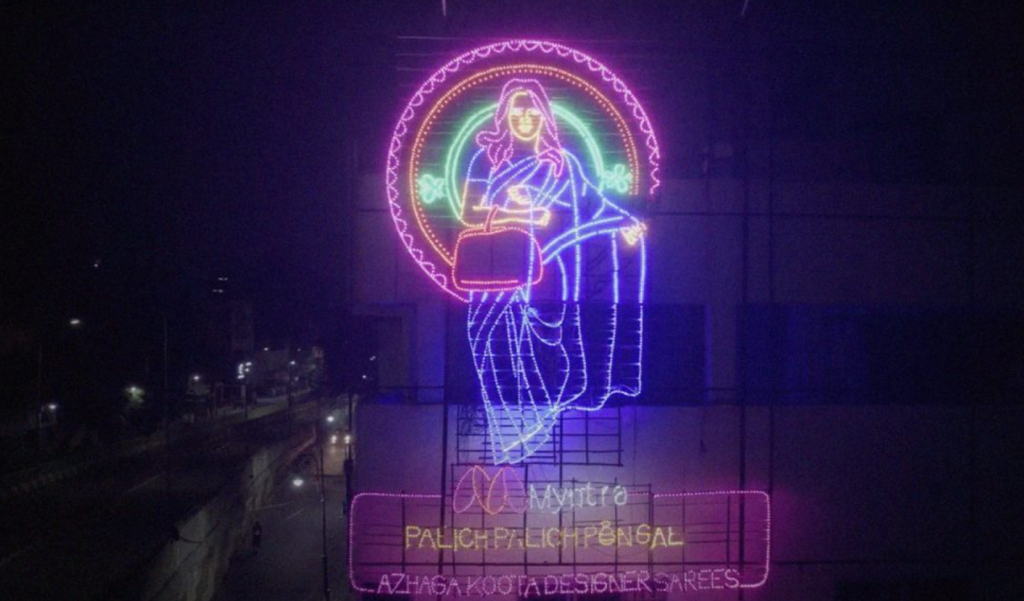
Photo Credits: https://www.adobomagazine.com/
Another impressive example is Myntra’s Pongal campaign, which introduced Palich Palich Pongal, a first-of-its-kind OOH initiative using light art. Traditionally an underrated art form associated with festivals, light art can be seen as the OG GIFs—thousands of small lights woven together to create giant installations depicting icons. Designed and built from scratch with native artisans from Tamil Nadu, these installations were showcased at Rohini Theatre, Koyambedu, Woods Road, and T.Nagar.
Also Read: Exploring Indian CSR Campaigns
Augmented Reality (AR) and 3D LED screens integration
Augmented Reality (AR) has significantly enhanced OOH advertising, making it more immersive. Cadbury Dairy Milk Silk’s #HowFarWillYouGoToMakeThemBlush exemplifies the use of AR in OOH. This 360-degree campaign used augmented reality (AR) to allow young lovers to send secret messages to their loved ones.
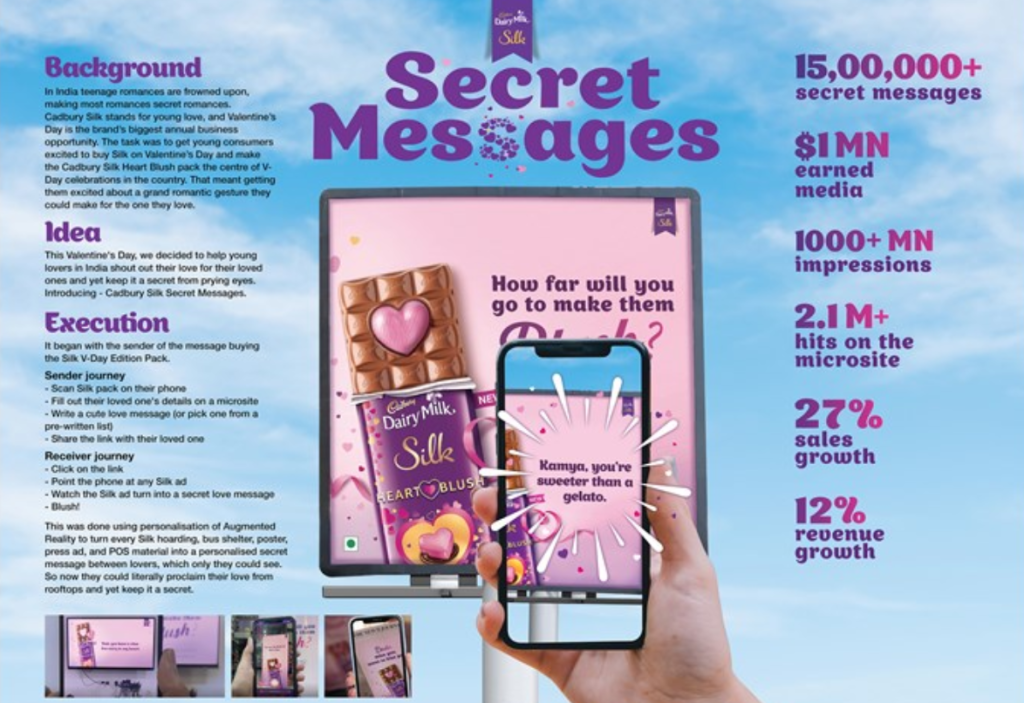
Photo Credits: https://kyooriuscreative.awardsengine.com/ 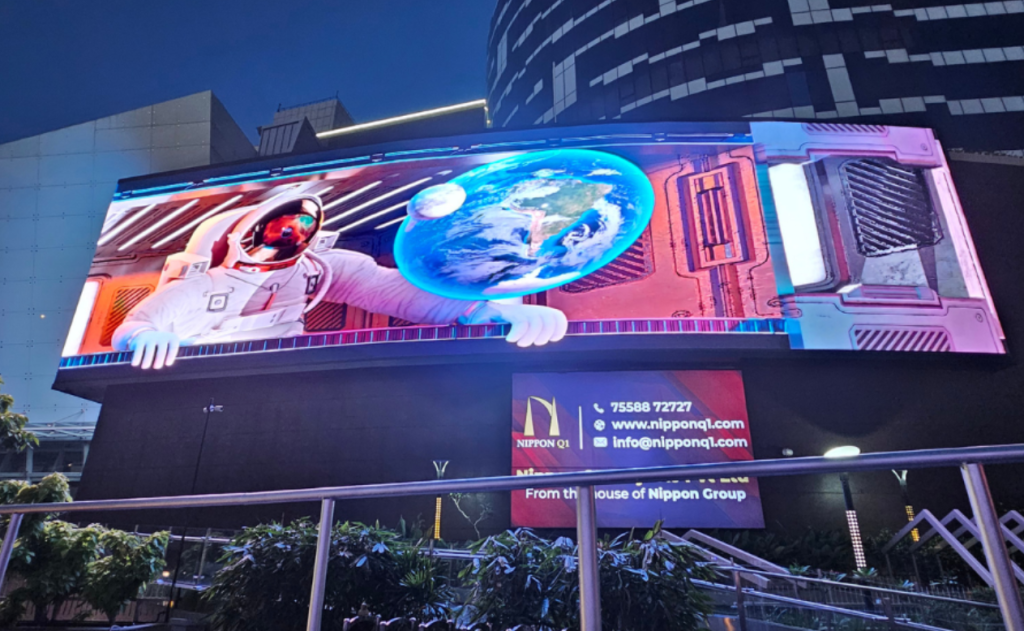
Photo Credits: www.media4growth.com
By scanning special AR-enabled packaging, newspapers, or hoardings, users could reveal hidden messages and animations. If the recipient couldn’t step out of home, they could still experience the message on a virtual hoarding set on the moon’s surface, created in augmented reality. The latest innovation in OOH advertising is the use of 3D LED screens, which produce stunning visual effects. PlayAds’ 3D LED DOOH screen for Nippon Paint at Q1 Mall in Kochi, India, exemplifies this trend, offering a dynamic and immersive advertising experience.
Also Read: How AI Personalisation Is Changing Customer Experience?
Immersive and multi-sensory experiences
Modern OOH advertising goes beyond visual impact to create multi-sensory experiences. The Megh Santoor campaign by Brooke Bond Taj Mahal Tea is a prime example. This campaign, which set a Guinness World Record, combined visual appeal with an auditory experience by playing classical Indian music when it rained.
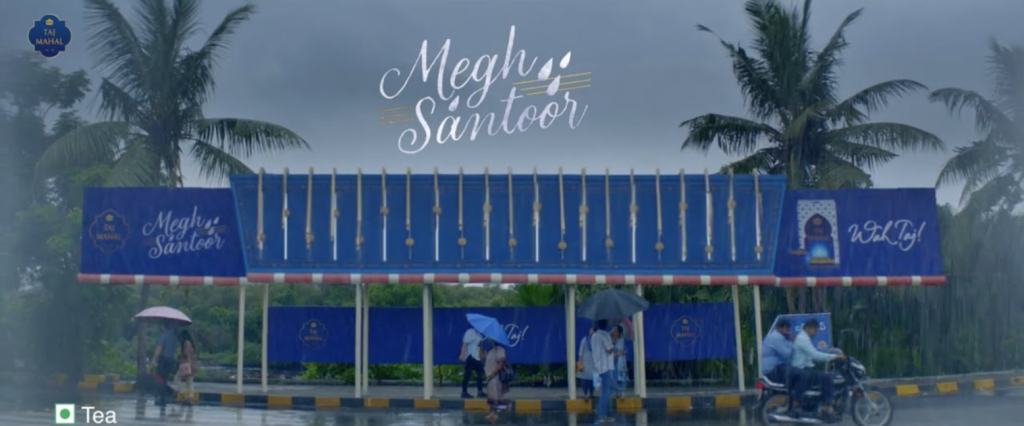
Eco-friendly initiatives
In India, the OOH advertising sector is making significant strides towards sustainability, embracing innovative practices to address environmental concerns. One standout example is the Zest Outdoor Project, which has set a remarkable precedent with the world’s largest generation of energy through solar panels.
This project features 650 solar panels installed across 31 billboards in Mumbai. By harnessing solar energy, these billboards significantly reduce reliance on traditional power sources, showcasing a major leap towards sustainable advertising practices in India.
Also Read: Challenges Of Market Segmentation In India
AI and personalisation
Looking ahead, the future of OOH advertising seems poised to embrace personalisation and artificial intelligence. Brands are beginning to explore how AI can enhance the relevance of advertisements, tailoring them to match individual preferences and behaviours.

A prime example is the Insta Smart Billboard created by Havas Media Group. This innovative out-of-home campaign used AI software to craft live ads in real-time, based on thousands of data points generated during the World Cup. Each advertisement was tailored to the live action of the game, predicting consumer cravings and creating thousands of bespoke outdoor ads that broke the limitations of traditional OOH media.
Also Read: How AI Is Revolutionising Marketing In India
Conclusion
While technology has brought dynamic digital billboards and interactive displays to the forefront, traditional static billboards still retain their charm and impact. From the iconic Amul Billboards to the engaging Mumbai Police billboards, these classic formats continue to captivate audiences. This blend of traditional and modern approaches in OOH advertising demonstrates that the essence of effective advertising endures, regardless of technological advancements.
At Melt, we had Neha Ahuja, the marketing mind behind Spotify India, discuss the role of OOH advertising. Watch the full episode to discover Spotify India’s OOH strategy and learn how offline campaigns become digital phenomena through fan engagement and word-of-mouth.
